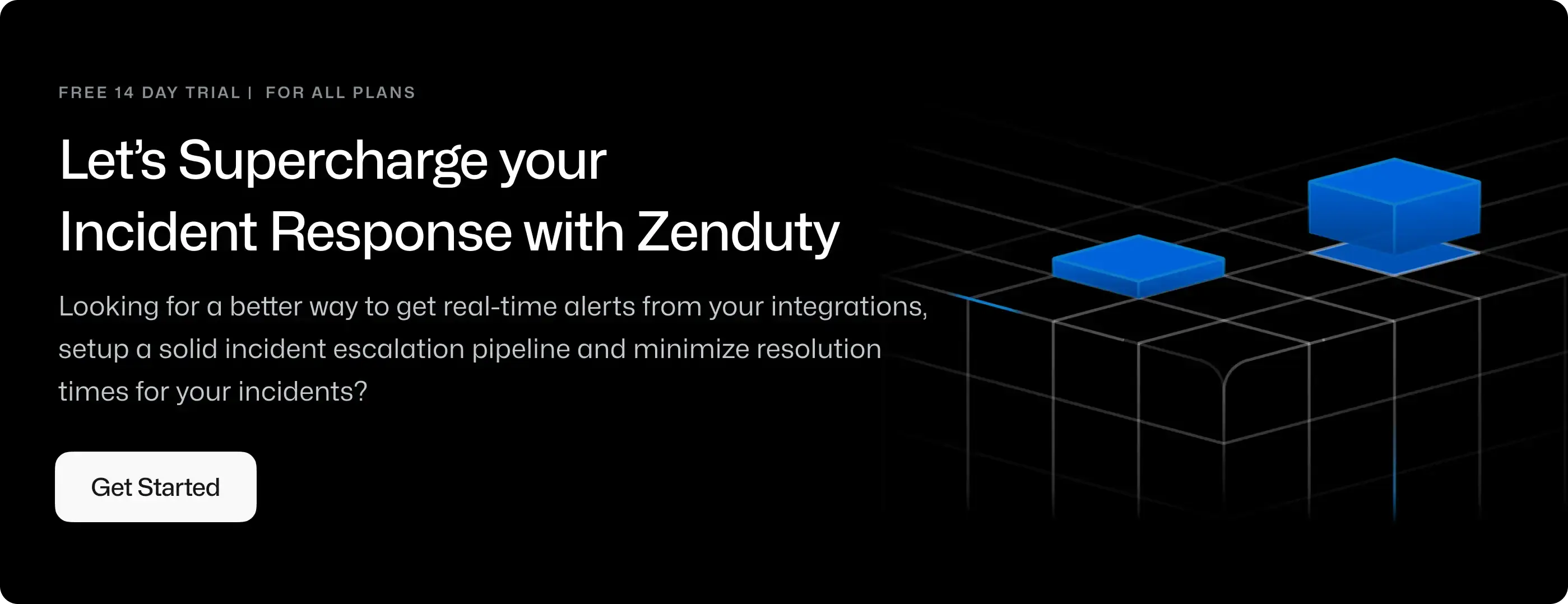Uptime.com Integration Guide
Uptime.com provides uptime monitoring for websites and servers.
What can Zenduty do for Uptime.com users?
With Uptime.com's Integration, Zenduty sends new Uptime.com alerts to the right team and notifies them based on on-call schedules via email, text messages(SMS), phone calls(Voice), Slack, Microsoft Teams and iOS & Android push notifications, and escalates alerts until the alert is acknowledged or closed. Zenduty provides your NOC, SRE and application engineers with detailed context around the Uptime alert along with playbooks and a complete incident command framework to triage, remediate and resolve incidents with speed.
Whenever Uptime.com detects that a website/service is down, it triggers an alert in Zenduty. Zenduty will then create an incident. When that website/service goes back up, Zenduty will auto-resolve the incident.
You can also use Alert Rules to custom route specific Uptime alerts to specific users, teams or escalation policies, write suppression rules, auto add notes, responders and incident tasks.
To integrate Uptime.com with Zenduty, complete the following steps:
In Zenduty:
-
Go to Teams on Zenduty and click on the team you want to add the integration to.
-
Next, go to Services and click on the relevant Service.
-
Go to Integrations and then Add New Integration. Give it a name and select the application Uptime.com from the dropdown menu.
-
Go to Configure under your integrations and copy the Webhook URL generated.
In Uptime.com:
-
Log in to Uptime.com, navigate to Notifications and select Integrations.

-
Click on the New Profile button.

-
From the Provider Type dropdown menu, select the Custom URL Postback (Webhook) option. Fill in the name as Zenduty, or any other easy to remember name, and paste the Webhook URL you copied earlier in the URL field.

-
Save to finish creating the Webhook.
Assign Integration to Contacts
To add your integration to an existing contact, click on or type the name of the contact into the Assign to Contacts field within the integration setup screen.
You can designate a new contact from within the integration setup. Simply enter the name of your new contact into the Assign to Contacts field, and select it as depicted below:

Uptime.com will create a new contact and assign the integration to it. You can find this contact when you click Notifications>Contact.
Assign Integration Contact to a Check
If you have created a new or dedicated contact for your integration, you will need to add it to specific checks. If you have assigned the integration to a contact that is already assigned to one (or more) checks, you may skip this step.
Return to your Check’s Edit screen and assign this contact to the Contacts field to be notified of a downtime event. Alert data will appear in real time.
Test Your Integration
Test your integration with one of the following two options:
- Force the Check assigned to your Integration to fail by altering it (HTTPS checks can use a misspelling of the domain, for example).
- Click Notifications>Contacts, then click Actions>Test to send a test to the Contact.

Set up an Endpoint to Monitor
-
To set up an endpoint to monitor, go to Monitoring->Checks.

-
Click the Add New button, and fill out the form details below:

-
In the Contacts field make sure the contact has the integration assigned
-
Click save to allow Zenduty to notify you of the alerts.
-
Zenduty’s Uptime.com integration has now been configured!
